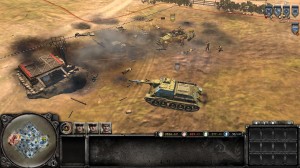


It also shifts the focus of the gameplay loop from an equal focus on micro and micro to one that rewards micro significantly more. While it is important to reward players for playing well, reducing comeback opportunities because of one interaction probably isn’t the way to go. An army that wins a fight is much more likely to win the next fight, and even more likely to win the following, which reduces comeback opportunities within any individual game. The downside, of course, to veterancy is simple - it significantly reduces unit parity in a rather snowbally way. Providing some sort of veterancy component rewards individual micro decisions with immediate feedback in a way that a successful macro cycle cannot. Given the potential snowballing downsides, why would a modern RTS choose to include a Veterancy system? The answer is a deceptively simple one - it allows the gameplay loop to reward players with a sense of progression within individual games, something that can be lacking within most RTS games.Ĭontrast this idea with a tactical FPS - killing individual opponents in a round provides that tangible burst of satisfaction that winning an individual fight in an RTS often lacks.

Wayward Strategy has an excellent article that goes into more depth, as well as discusses the pros and cons of the idea. In some RTS games ( Company of Heroes, Command and Conquer, Warcraft III), units or clumps of units are able to gain in power through combat interactions, normally through doing damage or confirming kills. What is Unit Veterancy?īefore we talk about it in earnest, we should briefly define the concept. While they dropped some interesting tidbits on the systems they are developing (see our coverage for more on that), the most controversial topic they touched on was that of Unit Veterancy. Recently Frost Giant dropped a new discussion topic after a 5 month absence.


 0 kommentar(er)
0 kommentar(er)
